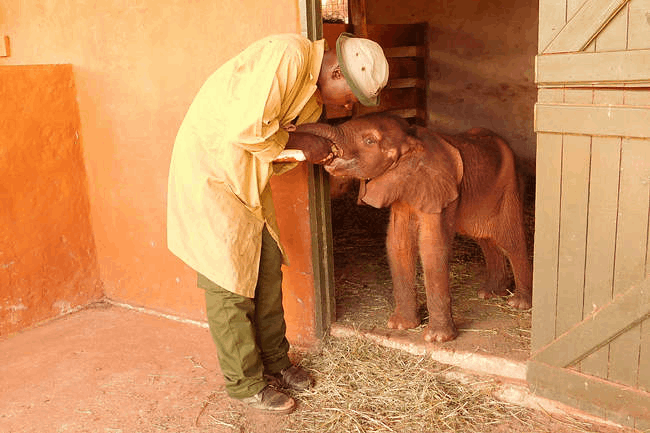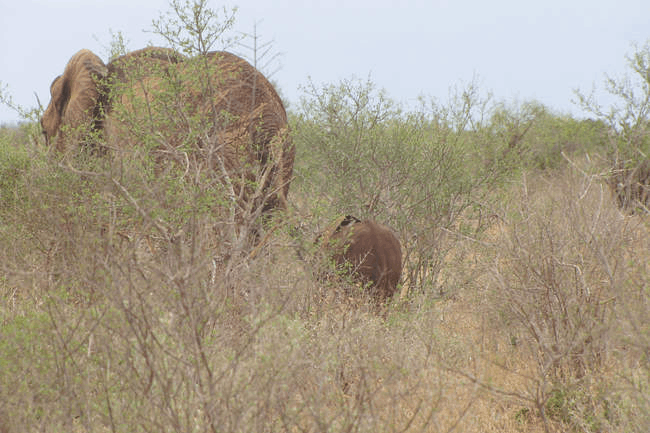In a recent wildlife conservation endeavor, the veterinary unit of the David Sheldrick Wildlife Trust (DSWT) showcased its unwavering dedication to the welfare of elephants.
A calf exhibiting hind leg lameness was identified near Voi River, underscoring the critical need for prompt intervention to safeguard the health of these majestic creatures.

Tour drivers near Kanderi swamp, along Voi River, noticed a herd of elephants, with one calf visibly struggling with hind leg lameness.
Recognizing the urgency, the veterinary unit immobilized the mother and the calf to prevent separation during the intervention.

The mother was immobilized first, receiving 16 mgs of Etorphine administered from a vehicle. Subsequently, the calf was immobilized with 2 mgs of Etorphine, and both elephants lay down on their left sides.
Examination revealed an old injury at the calf’s left hind limb, particularly the knee, with signs of misshapen healing.
After a thorough examination, the veterinary team concluded that surgical intervention was not feasible for the nature of the injury.

While the deformity would persist, it was determined to be non-life-threatening, allowing the calf to continue with the condition.
To mitigate potential complications and aid healing, the calf received an intravenous administration of 20 ccs of Dexamethasone Hcl through the ear vein and 20 ccs of long-acting Amoxicillin administered intramuscularly.
The prognosis for the calf’s well-being was optimistic.

Anesthetic effects were reversed by administering Diprenorphine Hcl three times the Etorphine dose.
Both mother and calf woke up simultaneously, showcasing a calm and coordinated recovery.
Avoiding separation during the procedure contributed to a smoother reunion within the herd.
Beyond this intervention, the veterinary unit played a vital role in a legal case concerning recovered elephant trophies.
A DSWT veterinarian traveled to Malindi to provide testimony in court, emphasizing the multifaceted nature of their conservation efforts.
The DSWT veterinary unit thanked their sponsors, ViER PFOTEN, for substantial financial support.
Collaborative efforts with the Kenya Wildlife Service, especially the Assistant Director of Tsavo Conservation Area and the Head of the Veterinary and Capture Services Department, were acknowledged for their continuous support.
The successful intervention by the DSWT veterinary unit in addressing hind leg lameness in the elephant calf near Voi River exemplifies their commitment to wildlife well-being.
This comprehensive approach, including timely immobilization, thorough examination, and appropriate treatment, mirrors their ongoing dedication to the conservation and welfare of elephants in their natural habitats.